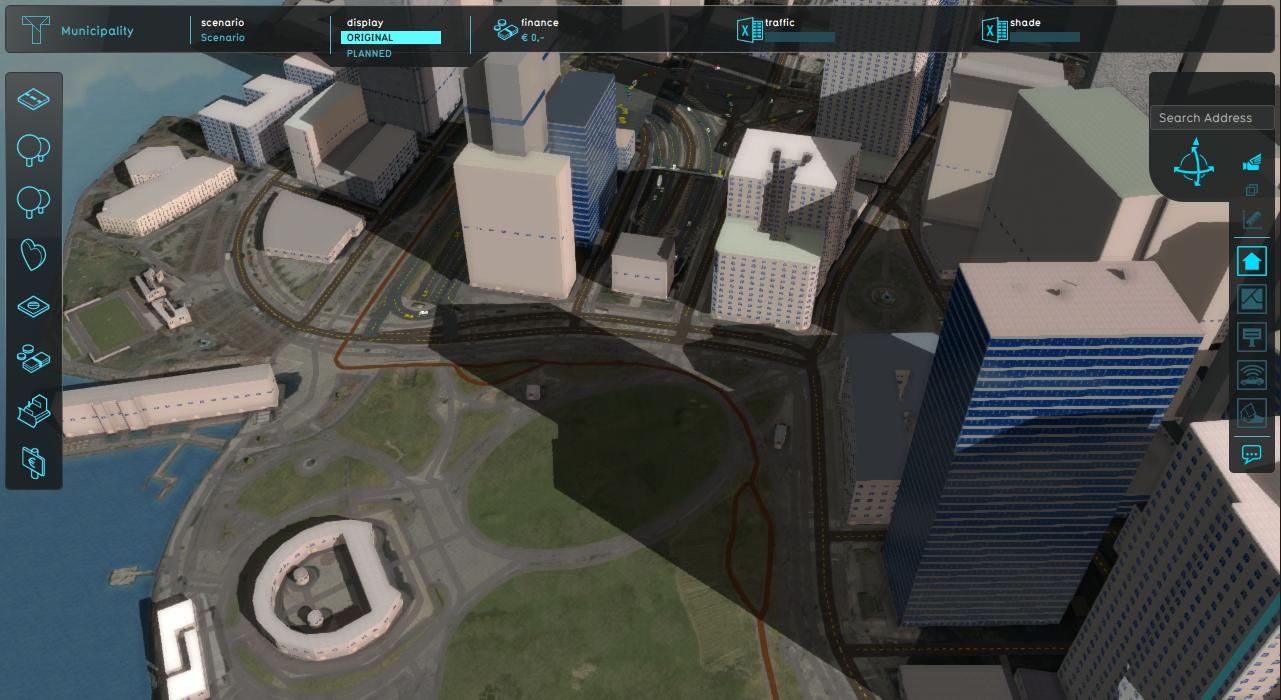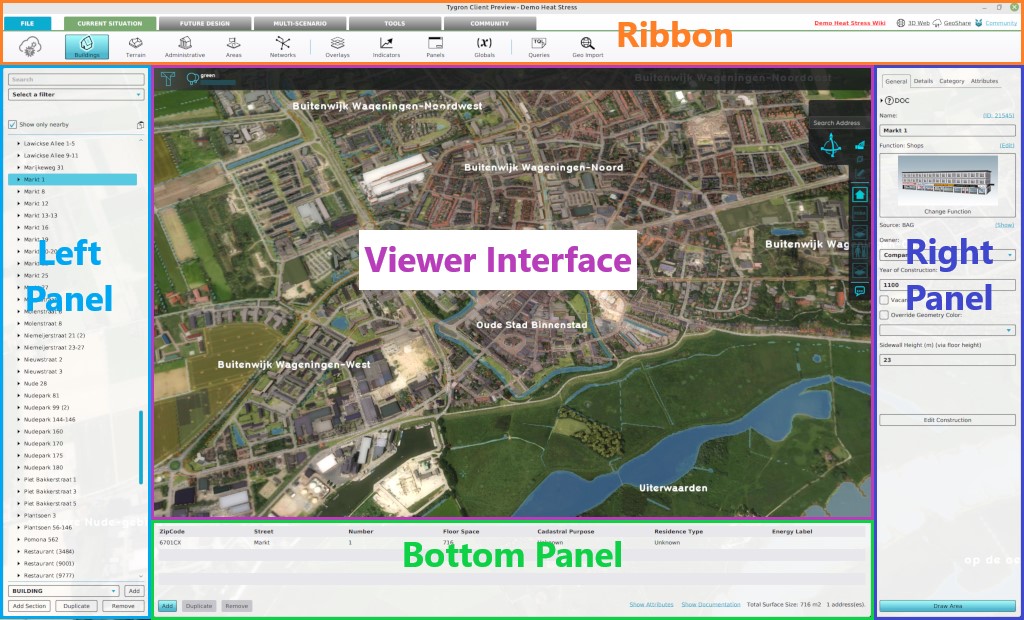Tygron Client
The Tygron Client is an application that allows users to log in and interact with the Tygron Platform. It can be used to:
- Create new projects;
- Edit existing projects;
- Explore scenarios using test-run sessions;
- Host single and multi-stakeholder sessions;
- Manage your Tygron Platform account.
The Tygron Client provides distinct user interfaces for these various actions:
- Main menu
- The login screen and initial menu. In the main menu, you can select which functionality of the Tygron Platform you wish to use.
- Management
- These are the management screens. To manage your projects and accounts, you can use the management screens. In these screens, you will be able to use simple lists and buttons to indicate what you wish to do.
- Viewer
- The interface relevant to Stakeholders in a the project session. This interface is rendered on top of the 3D Visualization, and provides a user with all the options and information relevant to their role as stakeholder. This is the most complex interface.
- Editor
- The interface used to edit a project. It is structured around the Viewer and also rendered on top of the 3D Visualization.
How to use the interfaces
Although each interface follows standard practices for software interfaces, it can sometimes be a bit daunting when an interface changes. Each interface behaves differently from the other interfaces.
Initial Screens
The initial screens of the Tygron Platform are all screens which appear before the main menu appears. It includes the End User License Agreement, the hardware test and the login screen.
The main menu is the first visible interface from where you can navigate freely. When you have logged in successfully, the main menu will appear on the left of the screen. Each option has a clickable icon, and is located in a descriptive section with a title at the top. When an icon is clicked, you progress further into the menu. When your options have clearly indicated what you wish to do, you will proceed into a different part of the editor. For example, you can follow the steps below to start the editor, and enter a different part of the Tygron Platform with a different interface:
- Start the online Tygron Platform (https://engine.tygron.com)
- When presented with a log in screen, enter a valid username and password, and log in.
- Under the heading "Editor", select "Start Editor".
- Select "New Project".
Options
- Main article: Options interface.
The options interface is used for the screens where you are able to manage your projects and accounts. They can be found under the option "Options" in the main menu. They are screens comprised of lists of that which you wish to manage, and several input fields for their properties. By using the buttons and input fields, you can change the properties of users and projects.
Viewer

The Viewer is the interface relevant to Stakeholder during a session. It is rendered on top of the 3D Visualization. Near the edges of the screen you can find the most prominent parts of the interface; the Top bar, the Action menu panel, the Navigation panel. These are available to provide information to the user, provide means to the user to gather more information, and to interact with the project session. Other panels, such as popup, indicator and budget panels are accessible through these panels or by interacting with objects, such as popups, in the 3D Visualization.
Editor
The Editor interface is synonymous with the editor. It is the interface which allows you to change projects as desired. The editor interface consists of the Editor Menu bar, the Editing area and the 3D Visualization, which is itself the user interface. The editor allows access to editor panels which allow various components of a project to be added, changed, and removed, such as stakeholders, indicators and buildings.
